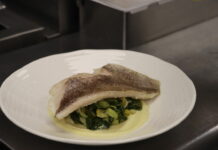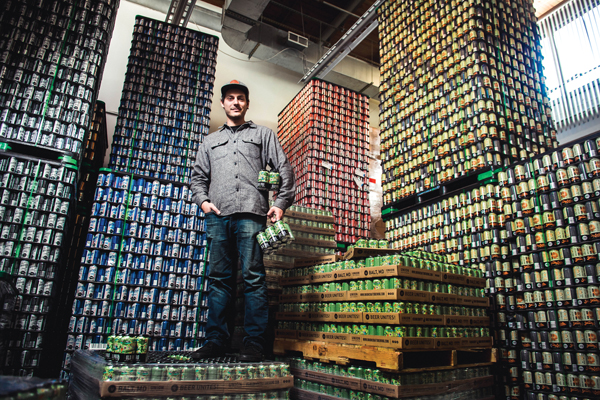
Boordy Vineyards reposes on a pastoral corner of northeast Baltimore County—barely 15 minutes beyond the Beltway but a world away in terms of bucolic charm. Rows of vines arc gracefully over the undulating lands, sweeping down to a series of trim green-and-white outbuildings clustered around a 19th-century stone barn. Visit the winery on a weekday afternoon for a visage of peaceful tranquility. Or, come on a warm summer’s evening for a whole different vibe. There might be a big band in snazzy red blazers pumping out swing tunes for dozens of dancers jostling on the flagstone patio fronting the barn. Hundreds more revelers would be picnicking beneath a nearby pine bower or enjoying the tunes—and the wine—on blankets spread beneath the stars on adjacent grassy slopes.
“On a June evening during a concert, you would see 1,200 to 1,500 people out there,” says James Prichard, Boordy’s director of wine sales, motioning out the door of the cozy barn-cum-wine-tasting space. “The events here really are what got us to the point where we are well known—getting around 80,000 visitors last year. It helps that we’re so close to Baltimore but it feels like the middle of countryside. But what we did over the past 20 years, with all of our events, is what gave us the foundation for where we are today.”
The winery, whose roots date back to 1945, is just a few years removed from spending more than $3 million on state-of-the-art winemaking equipment. There have been investments, too, in what’s emerged as Maryland’s viticulture sweet spot: the slopes of Frederick County’s South Mountain with their stony soils and cooler evenings. The bulk of Boordy grapes are now grown on land acquired out that way. They’ve helped move Maryland wine from novelty to notable—winning prizes and earning accolades. Some of their dry reds, such as the Landmark Cabernet Franc, now sell (and quickly sell out) at more than $40 a bottle.
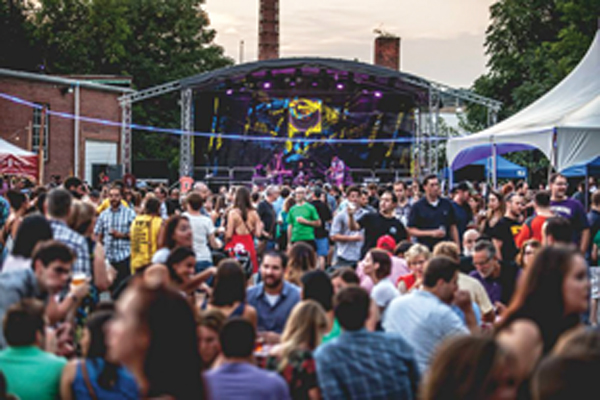
Boordy has always been in the business of trying to make good wine, and a tangential part of that work has been finding ways to show people a good time at the winery. And what’s true for vineyards holds for the region’s other craft-alcohol makers—the breweries, distilleries, cideries and meaderies. Bereft of the advertising budgets that the likes of Anheuser Busch, Robert Mondavi and Bacardi enjoy, our hometown makers must build brand awareness and loyalty from face-to-face, in-house, lips-to-liquid encounters—and bands, food, films and general frolic can help make that happen.
Perhaps nobody knows this as well as Kevin Atticks, who wears more Maryland booze hats than anybody—simultaneously serving as executive director of the Maryland Wineries Association, the Brewers Association of Maryland and most recently the Maryland Distillers Guild. “When you are making something smaller-scale and with better ingredients, the price is going to be higher, which is why the makers rely so heavily on getting people in to taste their products,” he says. “When you can bring someone to your product through an experience, it ends up being a much more valuable relationship than you can build just through brand advertising. Certainly, the wine industry developed that way, where the No. 1 way that new customers were introduced to local wine was through events and festivals.”
Breweries are following in these grape-stained footsteps, with some notable differences. For one thing, wineries are in rural areas where countryside vistas can be part of their appeal. The burgeoning array of farm breweries notwithstanding, most beer makers are in urban or suburban areas. So whereas Boordy offers visitors leafy green environs and rustic charm, Woodberry’s Union Craft Brewing has only an industrial building and an asphalt parking lot hard up against the JFX. Still, they often pack the pavement with pint-holding patrons enjoying concerts, cornhole contests or food truck grazing.
“When we started, our two main goals were to brew world-class beer and to create a really vibrant community based around a locally produced product,” says Jon Zerivitz, Union co-founder and director of marketing. “We purposely chose a location for the facility that was in a neighborhood so we could be part of everyday life in Baltimore. The craft brewing ethos is to be homegrown and to use world-of-mouth driven marketing and we try take that a step further and make it really fun with events of all kinds in our space.”
Musical happenings at the brewery have included everything from the Baltimore Bluegrass Festival to Friday funk nights. There have also been oyster festivals, al fresco movie nights (via an inflatable screen) and even a now-annual activity cribbed from the Cub Scouts: pinewood derby races, wherein patrons compete in sending diminutive hand-built wooden cars down a ramp.
“Our anniversary party is our marquee event, and this will be our fifth, so we will try and blow it out this year,” Zerivitz says. (Success has even brought growing pains, as the brewery is looking to move into a larger building in the neighborhood, probably within a year’s time.)
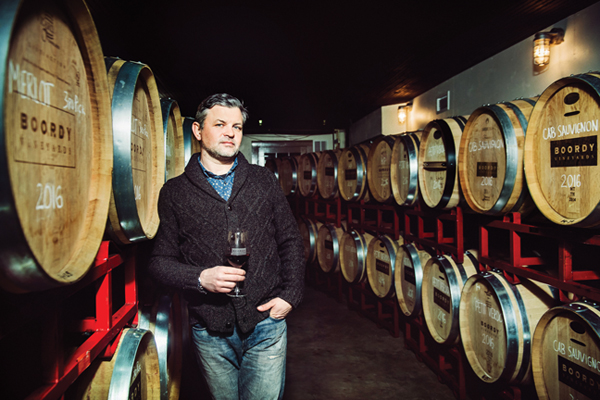
Maryland craft distilleries, which haven’t been around for a decade yet, are the liquid newcomers to the adult-beverage scene. McClintock Distilling just opened its doors in downtown Frederick in December. But it is already finding ways to get folks to visit its 5,400-square-foot home within a historic building to taste its Epiphany Vodka, Forager Gin and Maryland Heritage White Whiskey (aged bourbon and rye are in the offing). One curious boon to their bottom line has been weddings, four of which have been held at the distillery so far; a thicket of future bookings stretches well into 2018.
“There seems to be a trend for younger couples to move away from traditional wedding venues, and our older industrial brick building offers a rougher aesthetic element and a downtown location,” says distillery co-founder Braeden Bumbers. “People who want to get married in a distillery seem more relaxed about things, and it’s all been pretty low-key—though we had one wedding with north of 200 people.”
In February, they held a Winter Whiskey Market with merchants selling craft bitters, shrubs and other artisanal bar goods. “We probably had 1,200 people come through, which was a nice jump in a slower month,” Bumpers says.
He hopes to put music and movie nights on the distillery calendar, but hosting public events is generally more problematic than private weddings because of the way distillery licensing laws read at the moment. There are restrictions about serving food, beer and wine (without a catering license), and as for their own liquid line, they are only allowed to provide three half-ounce samples per visitor. Mixed drinks are forbidden, so something like a martini night with a snappy jazz combo serving up Sinatra can’t happen. And, alas, when you’re trying to showcase something like a craft gin, a straight shot is perhaps not the best way to go.
“We’d like to keep people hanging out here,” Bumbers says. “But at a certain point, without cocktails or anything like that, there’s no incentive for them to stay and continue spending, so that’s our biggest drawback right now.”
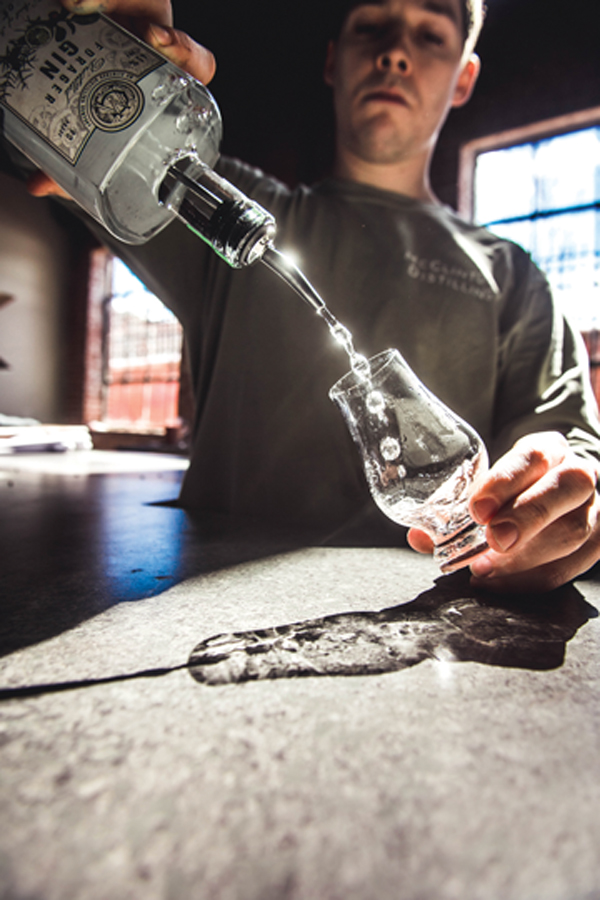
State legislation has been introduced to allow for cocktail sales/samples at craft distillers, but it’s not going anywhere fast at the moment. Atticks and others are often busy down in Annapolis working to bring antiquated alcohol rules into the craft-maker age—with some success. Consider that when Union Craft first opened its doors they weren’t legally allowed to sell pints of beer, and now their taproom is jumping. (Alcohol wholesalers and retailers provide the most pushback on law revisions seen to favor the craft industry.)
Meanwhile, back at Boordy, Prichard says they are moving away from staging so many paid events. No, the summer evening concerts aren’t going anywhere (a goodly number of Baltimore marriages probably began as Boordy first dates). But they’ll have fewer paid events between November and March.
Indeed, they have music nights in the barn during the cold months that are free of charge. Another increasingly popular no-cost event is the Thursday afternoon farmers market, where wine is sold alongside a host of local products and produce. They can draw upwards of 1,000 people.
Some large and lucrative events have been scrapped, such as Girls Night Out. Prichard speaks diplomatically about why this extremely popular evening was jettisoned (let’s just say that when some 800 ladies get their grape on, things can get a little rowdy).
Prichard puts it this way: “We are really shifting towards a much more refined and educational wine experience.”



